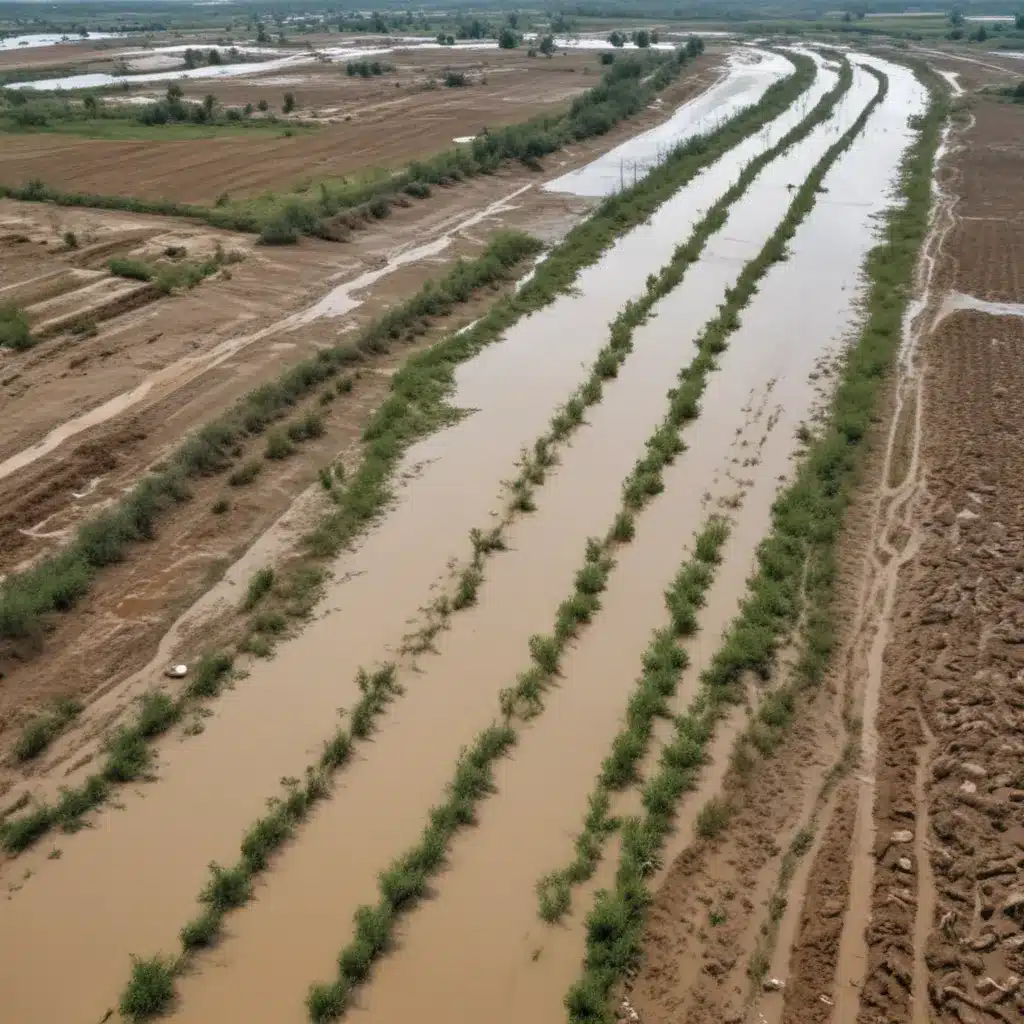
As experienced flood control specialists, we understand the critical importance of developing comprehensive strategies to mitigate the devastating impacts of floods. In our 15 years installing… In today’s world, where climate change is exacerbating the frequency and intensity of extreme weather events, it is essential to explore innovative financing mechanisms that can support the implementation of integrated flood control and ecosystem restoration initiatives.
Blending Public and Private Financing
One promising approach is the utilization of public-private partnerships (PPPs) to fund flood control infrastructure and nature-based solutions. Governments can leverage private sector expertise, resources, and risk-sharing capabilities to finance projects that combine engineered flood defenses with the restoration of natural ecosystems, such as wetlands, mangroves, and coral reefs.
The Global Environment Facility (GEF) has been at the forefront of this effort, recently approving $916 million in funding for international action on biodiversity, climate change, and pollution control. The GEF’s Integrated Programs, which include initiatives focused on the ocean, food systems, and critical forest biomes, aim to break down silos and advance holistic action across sectors and borders.
One such example is the Living Amazon Mechanism, a blended finance mechanism that leverages capital markets products to finance conservation activities in the value chain of a major cosmetic company in Brazil. This innovative approach not only protects the Amazon rainforest but also generates sustainable financial flows to support ongoing ecosystem management.
Parametric Insurance for Natural Infrastructure
Another innovative financing mechanism is the use of parametric insurance to protect and restore natural assets that provide flood risk reduction benefits. The Nature Conservancy (TNC) has pioneered the development of parametric coral reef insurance in Hawai’i and Quintana Roo, Mexico, which provides pre-agreed payouts for ecosystem repair and restoration based on the occurrence of pre-established parameters, such as the intensity of storms or hurricanes.
The 2020 payout from the Quintana Roo insurance policy was a significant milestone, as it marked the first time that funding from an insurance policy was available to help a natural asset recover. The nearly $850,000 payout enabled the deployment of “Reef Brigades” to assess the damage, stabilize coral colonies, and facilitate the natural recovery of the reef ecosystem.
This innovative approach not only supports the restoration of natural flood defenses but also reduces the potential for higher payouts to coastal property owners in the event of storm-related damage. By investing in the resilience of natural infrastructure, communities can better withstand the impacts of climate change and reduce the overall burden on public and private insurance systems.
Resilience Bonds and Impact Investing
Another emerging financing mechanism is the use of resilience bonds, which are a type of environmental impact bond that incentivize investments in nature-based solutions and other resilience-enhancing projects. These bonds can be structured to provide a return to investors based on the achievement of specific performance metrics, such as the reduction in flood risk or the restoration of wetlands.
The Belize Blue Bond is an example of a nature-positive insurance product that can help de-risk investments in nature-based solutions and unlock funding for conservation and restoration initiatives.
In addition to resilience bonds, impact investing has emerged as a powerful tool to channel private capital towards flood control and ecosystem restoration projects. Investors are increasingly recognizing the long-term value of investing in natural infrastructure and are seeking opportunities to generate both financial and environmental returns.
Sustainable Water Management Practices
Successful flood control and ecosystem restoration initiatives also require the implementation of sustainable water management practices that address the entire water cycle, from stormwater management to groundwater recharge. This can involve the use of green infrastructure strategies, such as permeable surfaces, bioswales, and constructed wetlands, which can help to reduce runoff, improve water quality, and recharge aquifers.
The Central Valley Flood Protection Plan in California is an example of an integrated approach to flood management that combines traditional engineered solutions with ecosystem-based approaches. The plan focuses on improving the overall resilience of the Central Valley’s flood management system, which includes the restoration of floodplains, the creation of multi-benefit projects, and the incorporation of climate change considerations into long-term planning.
Regulatory and Policy Frameworks
Underpinning these innovative financing mechanisms are robust regulatory and policy frameworks that support the integration of flood control and ecosystem restoration efforts. Governments can play a crucial role in establishing policies that incentivize private sector participation, streamline permitting processes, and encourage the adoption of nature-based solutions.
For example, the Flood Management Maintenance and Improvement Program in China highlights the importance of interagency coordination and the development of comprehensive regulatory frameworks to guide the implementation of integrated flood control strategies.
Conclusion
As we navigate the challenges posed by climate change and the increasing frequency of extreme weather events, the need for innovative financing mechanisms to support integrated flood control and ecosystem restoration initiatives has never been more pressing. By leveraging a combination of public-private partnerships, parametric insurance, resilience bonds, and sustainable water management practices, we can build more resilient communities and safeguard the natural assets that provide critical flood risk reduction benefits.
Through continued collaboration between government, the private sector, and the conservation community, we can unlock the full potential of these financing mechanisms and double-check that a future where our communities and the environment are better protected from the devastating impacts of floods. I encourage you to explore the resources and case studies provided in this article and to visit FloodControl2015.com to learn more about the latest advancements in the field of flood control and ecosystem restoration.
Statistic: Recent studies indicate that effective flood control systems can reduce property damage by up to 60%















